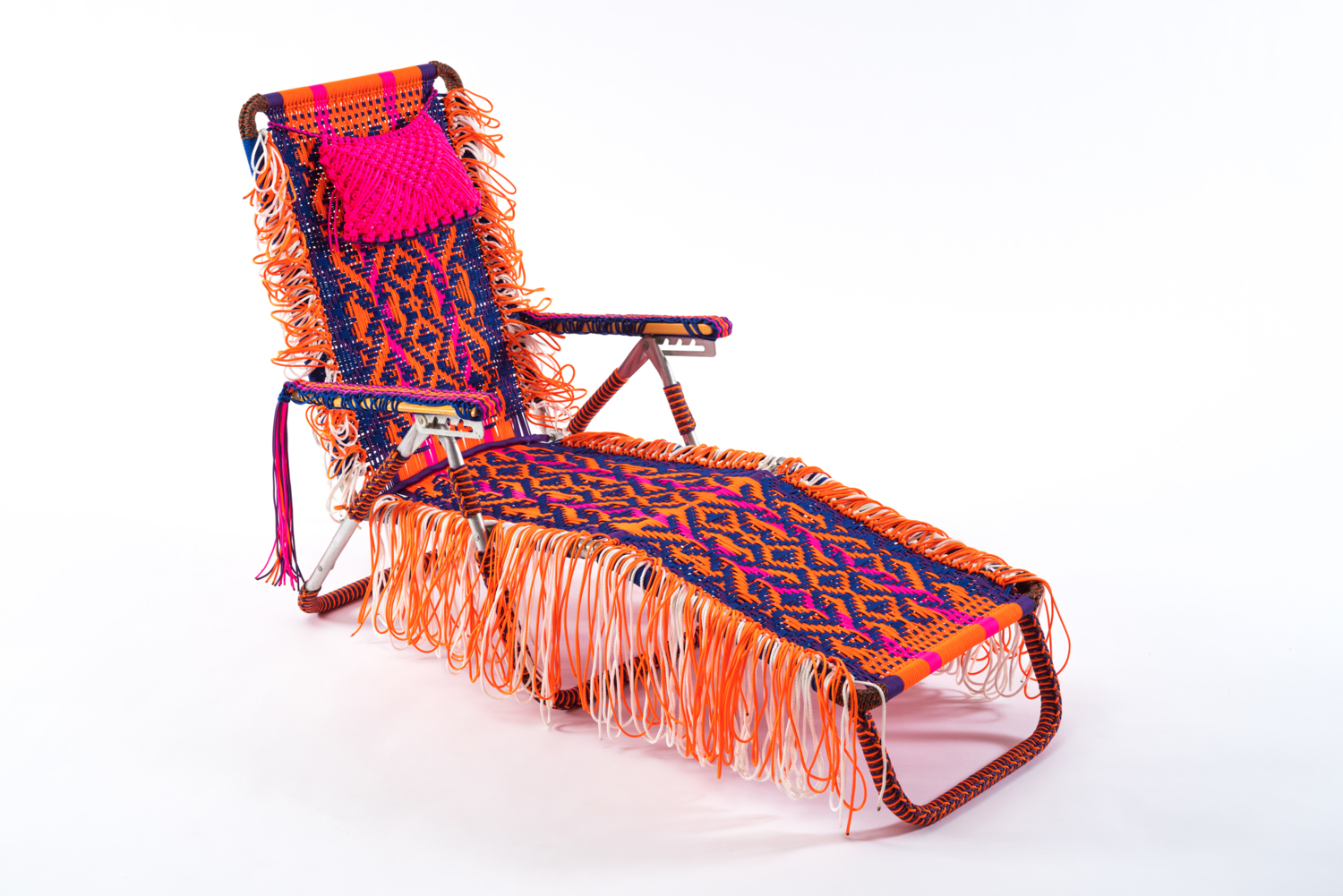Jim Drain: Membrane

Opening Reception: Saturday, February 22, 2020
Jim Drain’s long-term installation Membrane marks one of two inaugural projects in di Rosa’s Conversation Pieces series and the artist’s first solo commission in Northern California. Drain was a member of Forcefield, a seminal Providence, Rhode Island-based collective active from 1996-2002 that explored the merging of music, performance, film, and installation into one platform. His subsequent independent works, which range from rambunctious two-and-three-dimensional textile collages made from reclaimed fabrics to large-scale immersive public art projects that include vibrant murals, sculptures, and furniture, conjure the sensibilities of core collection artists like Franklin Williams, Roy de Forest, and Joan Brown. Drain’s collective and interdisciplinary background coupled with his intuitive, irreverent blend of assemblage, craft, and form, draw from and resonate with the distinctive spirit of the Bay Area and its artistic legacy.
The region’s hallmarks of collaboration and community share affinities with Drain’s approach to this mutable Gallery 1 installation built to serve as a long term multi-use space for a range of activities and events, including artist talks, lectures, symposia, and performances, as well as an area for lounging, reading, and daydreaming amidst di Rosa’s idyllic landscape. Taking a decidedly design-based craft-centered approach, Drain’s project riffs off of Northern California countercultural utopian design themes encompassing a mix of Buckminster Fuller’s geodesic domes, macramé textiles, and colorful tie-dyed motifs and draws from the rich history of craft and handwork centered in the Bay Area in the 1960’s and 70’s.
For Membrane, Drain’s signature mode of assemblage, which uses large welded steel frames to tether rag rug-like braided and ribboned fabrics, will be adapted to a suite of functional seating objects that take the metal frames of vintage aluminum lounge chairs and large geodesic half domes as their point of departure. The webbing for each piece (made collaboratively with assistants in Providence) will be comprised of vibrant hand-knotted macramé designs drawn from styles used in the work of Alexandra Jacopetti Hart’s Macrame Park (once installed outdoors in Bolinas, CA) and the work of Barbara Shawcroft (such as Legs, a large-scale public art sculpture once sited on the eastern end of the Embarcadero BART/Muni station.) This functional furniture system will be bathed in a reflective pink glow cast from the above skylights and paired with mobile iridescent screens that allow viewers to create their own spaces.
Membrane, as term and title, refers to the knotting and weaving techniques used in many of the works as well as the permeability of the objects placed within the space itself. Drain’s operative and immersive installation will create an organic, dreamlike experience that responds to the surrounding architecture and natural landscape of the gallery while building on the artist’s interests in developing generative utopian frameworks. Made for and completed by the viewer, Membrane offers a pliable, reflective space for dialogue and respite and locates something brighter and more inclusive in mounting dystopic times.
About the Artist
Jim Drain (b. 1975 in Cleveland, Ohio) is a multi-media artist based in Providence, Rhode Island and holds a BFA in Sculpture from the Rhode Island School of Design in 1998. His work with Forcefield was active from 1996 to 2002 and was part of the Whitney Biennial in 2002. He has had numerous solo and group exhibitions including University of Florida, Gainesville; Locust Projects in Miami, Florida; Blanton Museum at the University of Texas, Austin; John Michael Kohler Arts Center in Sheboygan, Wisconsin; The Garage in Moscow, Russia; The Pit in Los Angeles, California; Nathalie Karg Gallery in New York City; Nina Johnson in Miami, Florida, and Parker Gallery in Los Angeles, Califonia. Drain’s work is in the permanent collection of the Whitney Museum of Art; Pérez Art Museum, Miami; Museum of Modern Art; The Rhode Island School of Design Museum; Museum of Contemporary Art, Los Angeles and the Philadelphia Museum of Art.